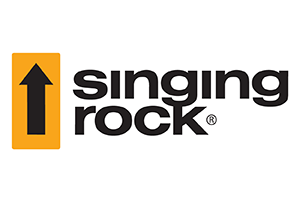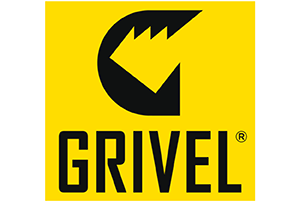Climbing Photography
Have you ever seen an incredible photo of a climber way up on a wall and wonder “how in the world was this photo taken?!” There is a lot that goes into climbing photography and in this blog, we’ll explain how it works, the gear you need, and some tips on how to take the best climbing photos.






There is a lot of gear that a climbing photographer needs, for logistics, safety, and convenience. Getting the right rope is important since you’ll be hanging out on it for quite some time. Static ropes are what to look for because they are made to be less bouncy than dynamic ropes. You’ll want to be able to move around on the wall to get your shots with the least amount of bouncing as possible. A good option for a static rope to buy is the Speleo 10.5mm Low Stretch rope from Edelweiss. When you’re up on the line and taking photos, it’s important to make sure your rope isn’t getting in any of the shots. If you’re shooting a climber below you, bring the excess rope up to you by coiling it, slinging it together, and clipping it to the back of your harness so it is all out of way. You may have to do that multiple times as you continue moving up the line.
There are a few different pieces of gear that you need to move up your static line. First is going to be an ascender and an assisted belay device. The ascender is what you use to move up the rope, you can buy them as a left or right hand, or get both. Climbing athlete and photographer, Nikki Smith, prefers to use her non-dominant hand on the ascender so she can have more control of the rope as she is ascending. A great option are the ascenders from Cypher. The assisted belay device is what attaches you to the rope and what you’ll use to lower yourself back to the ground. Make sure the belay device you get has assisted braking, like the GriGri from Petzel.


Next, you’ll need an etrier. This is essentially a step ladder made from dyneema slings used to step on as you are moving up the rope. The etrier will assist you by stepping up with your weight so you’re not pulling yourself up using just your hands. The Jacob 4 Step Etrier from Singing Rock is in Nikki's kit.
There are a few different carabiners you’ll need for your setup. First is an oval carabiner to attach to the ascender and loop the brake side of the rope to, to create your pulley system. Next are locking carabiners to connect your assisted belay device to your harness, to connect the etrier to the ascender, and to hold excess rope and your camera gear. We have a whole collection of carabiners at Cypher that fit with your preference.


Photos by Emily Trombly


Other things that you will need is a comfortable harness, comfortable shoes, and water to stay hydrated while you are up on the rope. The Dome Harness from Singing Rock is a great harness option so you can stay up on the line as long as you need while remaining comfortable and also has multiple gear loops allowing you to bring up everything you need. It will be best to not wear your regular climbing shoes while up on a static line because your feet will get extremely uncomfortable. Instead, wear comfortable shoes that have a stiff sole with sticky rubber, like approach shoes. Having a sticky rubber bottom will help you traverse on the wall easily. You may be up on the wall for a long period of time and need to stay hydrated. Nalgenes are a great water bottle option because loop can be connected to your harness with a carabiner. Cypher has an awesome custom bottle to show off your love for climbing, designed by our graphic designer, Kayla Kovago. An optional product to bring are fingerless gloves to help protect your hands and keep them comfortable as you are ascending and descending. The Five Fingerless Gloves from Edelweiss work well for photographers as you still have fingertip control.
When you’re setting up your system the first few times, make sure to have a mentor there with you to ensure you are doing everything correctly and safely. Climbing and climbing photography are inheriently dangerous and it is important to have your system checked before ascending the rope.


Now that you have an idea on what gear to get, let’s move into some photography tips! Like any outdoor photoshoot, it is important to plan out where you’ll be and when. Shooting in direct sunlight will cause your photos to overexposed and hard to edit. The angle of the sun can also create harsh shadows that too will make editing difficult. Use resources like weather apps and sun angle maps to determine the best time of day to photograph the area you’re going to. When choosing a route, be aware of any features on the wall that will make it difficult to photograph or ascend around. Safety should always be the first priority, so make sure you and the climber are choosing a route where it is safe for the both of you.
Like any photos, it is best when the person being photographed is wearing bright colors with no text or large logos so that their outfit pops in the pictures but isn’t distracting. The climber should of course wear what makes them feel comfortable and confident while they’re up on the wall, but making sure they’re wearing clothing that will look good in photos is also important.
There are many different angles you can shoot from and each will provide cool, unique photos. You can shoot from above, below, or from the side. Getting a variety of action shots that capture every part of the climb will be great for storytelling in your photography. If you are shooting from above or at an angle where you can see the ground, clean up the area so that there isn’t a ton of clutter on the ground in the photos. If you’re shooting to capture the climber, avoid getting photos of placing gear, chalking up, or resting. Focus on getting shots of them in motion. If it’s a photoshoot for a climbing brand to highlight products, make sure to get a mix of action and detailed shots of the gear being used. Discuss the intentions and goals of the photoshoot with the climber(s) beforehand so they are aware of what photos they can expect. Is this a photoshoot of them attempting a route or higher grade for the first time? If so, they might not want to redo parts of the climb if you didn’t get the shot you wanted. If the photoshoot is for fun or for highlighting products, communicate with the climber when you need them to redo a move or have their body a certain way to ensure that you get the photos you need.






If you need inspiration before you get on a route, look at photos taken of your favorite climbers or photos by your favorite photographers. It can be helpful to see what shots look best in the area. Remember that you can get inspiration from other photographers, but you should never copy what they do. Photography is art and should be unique to the artist, use the photographs as research and a starting point on where you want to take the session! Share your photos with us on Instagram @cypherclimbing, want a chance to be featured? Send us photos of Cypher gear in action for a chance to be featured on Instagram!










